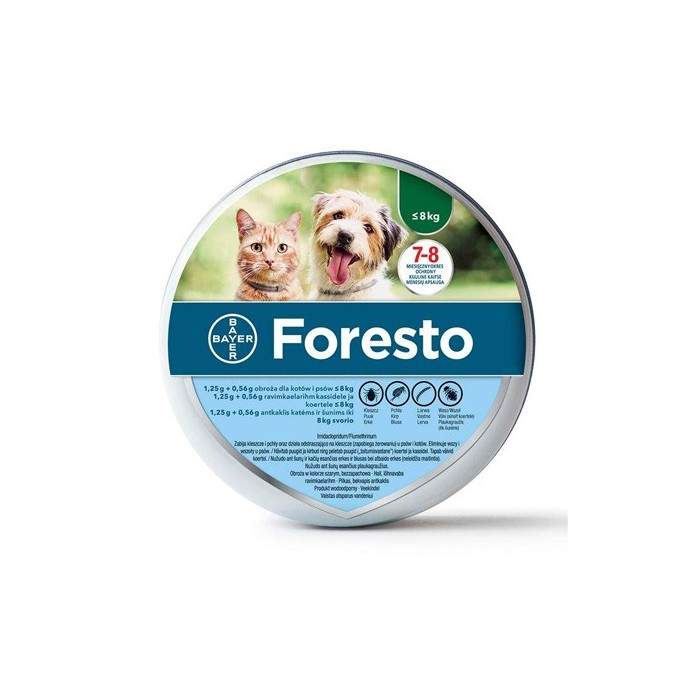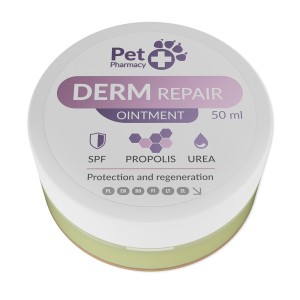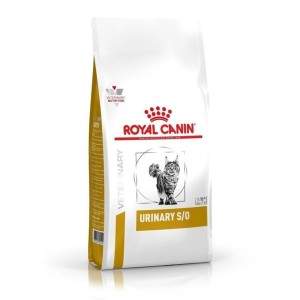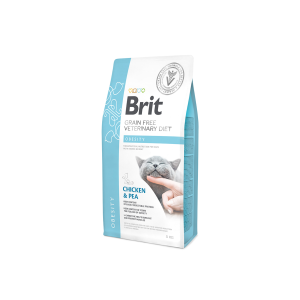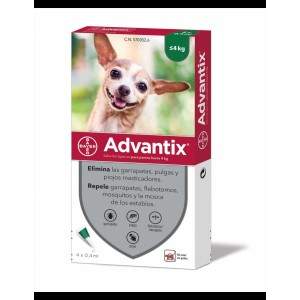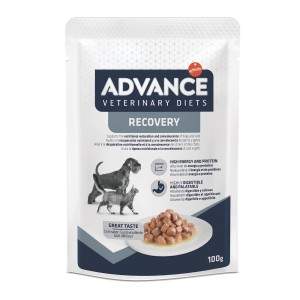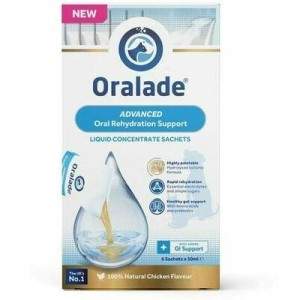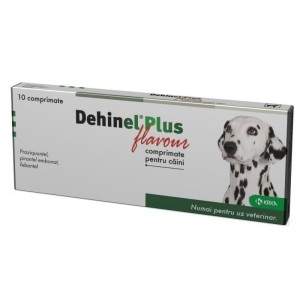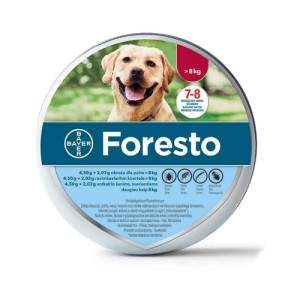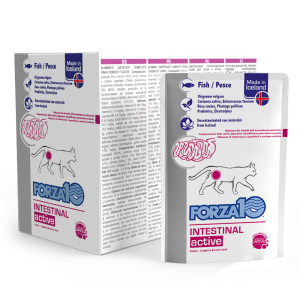Forest's collar against ticks for cats and dogs up to 8kg, 38cm
€41.99
Tax included
The collar against ticks and fleas for dogs and cats. The collar is for long -term cats and small dogs (up to 8 kg) to protect against ticks and fleas. The collar is odorless and waterproof.
Cats and dogs who are infected with fleas to treat and protect against re-infection for 7-8 months can also be used as part of a flea-induced allergic dermatitis treatment strategy and acting for 8 months acaricidically (killing) (ixodes castor, cats rhypicephalus turanicus, dog rhypicephalus haircut dogs and dermocentor reticulatus) and repelled (prevents meals) (ixodes castor and dog rhypicephalus sangvineus). It is also used for treating infected hairy dogs.
The drug works for 8 months acaricidically (kill) (ixodes ricinus, rhypicephalus turanicus) and repelled (prevents meals) (ixodes ricinus). It affects larvae, nymph and adult ticks. Even before treatment on the animal, the former tick and the collar is closed for another 48 hours. You may not be present and remain attached and be visible. It is advisable to pull such ticks before fastening the collar. Tick protection begins within two days after a collar clasp.
Ideally, the collar is worn at the very beginning of the flea and tick season. The drug indirectly protects the dog from rhypicephalus sanguineus transported by Babesia Canis Vogeli and Erlichia Canis pathogens, thus 7 months. The risk of developing dog babesiosis and erlichiosis is reduced.
Leaflet
Foresto 1,25 g + 0.56 g, collar for cats and dogs up to 8 kg
1. Registered and for the release of the drug series in the EEA countries responsible
The name and address of the manufacturer if they are different
The registrar
Bayer Animal Health Gmbh
51368 Leverkusen
Germany
The manufacturer responsible for the release of the drug series
KMP Pharma + Veterinary Product GmbH
Projensdorfer Strasse 324
24106 Kiel
Germany
2. The name of the veterinary medicine
Foresto, 1.25 g + 0.56 g collar for cats and dogs up to 8 kg
Imidacloprid
Flumetrine
3. Active (s) and other substances
One gray, odorless 38 cm long (12.5 g) collar contains 1.25 g of imidacloprid and 0.56 g of flumetrine as
active substances.
4. Indication (s)
For cats: infected with fleas (Ctenocephalides Felis), treated and protect against re -infection of 7-8
Month
The drug prevents the development of flea larvae in the animal environment for 10 weeks.
Forest can be used as part of the treatment strategy for flea allergic dermatitis (BAD).
The drug is acting for an acaricidal (kill) (ixodes ricinus, rhypicephalus turanicus) for 8 months
(prevents meals) (ixodes ricinus). It affects larvae, nymph and adult ticks. Even before treatment on a cat
Former ticks and a collar may not have any 48 hours and remain attached and visible. Such ticks
It is recommended to pull out before fastening the collar. Protection against ticks begins within two days of a collar
clasp.
Dogs: For those infected with fleas, treatment and re -infection protect (Ctenocephalides Felis, C.
canis) 7-8 months
The drug prevents the development of flea larvae in the animal environment for 8 months.
Forest can be used as part of the treatment strategy for flea allergic dermatitis (BAD).
The medicine ticks for 8 months is acting in acaricidically (kills) (ixodes ricinus, rhypicephalus sanguineus, dermocentor
reticulatus) and repelled (prevents meals) (ixodes ricinus, rhypicephalus sanguineus). It works in the larvae,
nymph and adult ticks.
19 ..
Even before treatment on the dog's former ticks and placing a collar may not have to die for another 48 hours and remain attached to the
visible. It is recommended to remove such ticks before applying the collar. Protection against ticks begins in two
days after a collar clasp.
For treating hairs (trichodectes canis) dogs.
The drug indirectly protects against rhypicephalus sanguineus transported by Babesia Canis Vogeli and Erlichia Canis
and thus 7 months for pathogens. The risk of developing dog babesiosis and erlichiosis is reduced.
Up to 8 months There is a reduction in the risk of infection of the Leishmania infantum, which is carried by beige fleas.
5. Contraindications
Do not use for less than 10 weeks. for age kittens and younger than 7 weeks. For puppies. Don't
Use in hypersensitivity to active substances or any of the auxiliary substances.
6. Adverse reactions
In rare cases, the first days after the collar clasps for animals that do not accommodate the collars may appear
minor behavioral disorders such as hiding, vocalization, hyperactivity, increased lick and/or fur
Cleaning or digging at the place of clasp. Very rarely, aggression was reported after a collar clasp.
It is necessary to make sure that the collar is fastened correctly.
In a place with a collar, mild itching, redness, hair loss may occur. These signs
It is rare for dogs and infrequent cats, and usually disappears within 1-2 weeks without removing the collar. Some
In case of symptoms, the collar should be temporarily removed. In very rare cases for dogs and rare
In cases of cats, the collar fastener may include dermatitis, inflammation, eczema, lesions or
bruising. In such cases it is recommended to remove the collar.
In rare cases, dogs may develop neurological reactions such as ataxia, seizures and tremor.
In such cases it is recommended to remove the collar.
Also in rare cases of dogs and cats may cause short -term and mild reactions as
Depression, changes in appetite, salivation, vomiting and diarrhea. As with other external use of medication,
Increased sensitivity animals may have contact allergic dermatitis.
The frequency of adverse reactions is determined in accordance with the following convention:
-very common (unfavorable (s) reaction (s) occurred in more than 1 in 10 treated animals),
- common (more than 1 but less than 10 out of 100 treated animals),
- uncommon (more than 1 but less than 10 of 1,000 treated animals),
- Rare (more than 1 but less than 10 out of 10,000 treated animals),
- Very rare (less than 1 in 10,000 treated animals, calculated and individual messages).
Noticing any side effects even not mentioned in this leaflet, or believing that
The medicine did not work, it is necessary to inform the veterinarian.
7. Type of destination (s)
Cats, dogs (up to 8 kg).
8. Doses, Method (s) and method for each species
20
Cats and small dogs up to 8 kg weighs one 38 cm collar. To the dogs,
For those weighing more than 8 kg, one 70 cm collar is Weed. Use on the skin. The collar
You need to fasten around your neck. Only for external use.
9. References for proper use
The collar should be removed from the sealed bag only before use. Unwrap the collar and make sure that in the inner
There are no plastic joints in the side.
Surround the neck of the cat without tightening (the collar and neck should remain two fingers wide). The rest
The end should be pierced through the loop and cut to remain 2 cm tip.
The collar should be strapped permanently for 8 months. and lubricated at the end of the treatment period. Periodic inspection
And if necessary, adjust the size of the collar, for extremely fast growing kittens.
This collar has a safe clasp mechanism. In very rare cases for a cat or extremely rare for a dog
When you get stuck, the animal's own effort is usually sufficient to break free.
10. Come on
Not applicable.
11. Special storage instructions
Keep out of reach of children.
No special storage conditions are required for this veterinary medicine
This veterinary medicine should not be used after the expiry date indicated on the bag and box.
The suitability date coincides with the last day of the month specified.
12. Special warnings
Special warnings using individual species for purpose animals
The ticks will perish and fall from the host, which falls out of the blood at 24-48.
However, each other mite may remain attached.
As a result, the possibility of infectious diseases transmitted by ticks in the event of adverse conditions,
remains.
Ideally, the collar is worn at the very beginning of the flea and tick season. Although noticed by a prominent dog
Little of the spread of Leismania infantum, the drug was characterized by changing repellent (prevents feeding)
action and insecticidal action against sand flea phlebotoma perniacias. In this way, sand fleas can
Boat and cannot be completely excluded from the possibility of infection with the possibility of the Leishmania infantum. The collar must be fastened before
At the beginning of the season of sand flea activity, which carry the Leismania infantum and to wear a whole period of activity.
21
As with most long -acting medicines, seasonal feeding may slightly weaken the collar,
when the tufts of hair are also lost in the active substance. Additional discharge from the collar begins
Immediately, the operation is fully updated without additional treatment or other collar.
In order to optimally control a large amount of fleas at home, it may be necessary to treat the environment with the right insecticide.
The drug is waterproof; When the animal is wet, the drug remains effective. A long -term, frequent one should be avoided
wetting or frequent shampoo as it can reduce the duration of the drug. Studies have shown that
Wash with shampoo or drizzle into water each month for 8 months. did not reduce the effectiveness of ticks,
When the active substance re -divorced on the coat, the effectiveness of fleas gradually decreased,
Starting at 5 months.
Bathing with shampoo or water influence on the transmission of dog leishmaniasis was not investigated.
Special precautions for persons using the medicine for animals
Store a bag with a collar before use in the outer package.
Do not allow children to play with a collar or put it in their mouths. Do not allow animals to sleep on a collar
In one bed with hosts, and especially children. Imidacloprid and flumetrine are constantly released from
collar on skin and fur.
For some people, a veterinary medicine can cause hypersensitivity.
People with hypersensitivity (allergies) to the material contained in the collar should avoid
contact with this veterinary medicine. Very rarely for some people a veterinary medicine may irritate the skin, eyes
and the respiratory tract. In case of eye irritation, the eye should be thoroughly washed with cold water. In the presence of skin irritation, the skin
Wash with soap and cold water. If symptoms persist, it is recommended to seek medical attention and show this
veterinary medicine leaflet or label.
The collar should be discarded immediately (see clause 4.9). When fastening a collar, you need
Wash hands with cold water.
Childhood, lactation, egg laying
Laboratory Flumetrine or Imidacloprid studies with rats and rabbits have not been identified on fertility or
For reproduction, there is no teratogenic or fetotoxic effect. Security or lactation
The use of animals is not established, so the use of the medicine is not recommended during pregnancy or lactation.
Overdose (symptoms, first aid measures, antidote)
Due to the structure of the collar, overdose and signs of overdose are unlikely. In clinical trials, when closed
5 collars for adult cats for 8 months for the period and 10 weeks. for age kittens 6 months for the period, no
Other than described in the "Adverse reaction" section did not appear. In rare cases, when the animal eaten the collar, may
weak gastrointestinal disorders (eg liquid stools) occur.
13. Special Unsuitable Veterinary Destruction or Waste Destruction
Provisions if necessary
Unused veterinary medicine or waste -related waste must be destroyed to the country's requirements.
This medicine cannot enter water bodies as it can be dangerous to fish and other aquatic organisms.
14. Date of Last Confirmation of Information Leaflet
2020 March.
15. Other information
22 Package: Box with one or two collar; Cardboard box with 12 collars.
Not all sizes of packaging may be supplied.
Both active ingredients on the animal from the collar polymeric matrix are released slowly and gradually. Cats
In the coat, both active ingredients are acaricidal and insecticidal concentrations that persist throughout the action
period. The active substance is distributed from the area of contact with the collar through the entire surface of the skin. Overdose
and blood serum kinetic studies in destination animals found that in systemic blood flow imidacloprid
It has been temporarily entered and flumetrine is almost impossible to detect. Absorption through the mouth is not important for clinical action.
The effect against fleas (Ctenocephalides Felis and Ctenocephalides Canis) begins after 48 hours. after the collar
clasp.Be previously mentioned indications, the drug also affects PE PULEX IRRITANS FLUS. In addition to the above
tick species, the drug also affects cats ixodes hexagonus and non -European tick amblyomma Americanum species and
Dog I. Hexagons, I. Scapularis, Neuropic Tick Dermocentor Variabil species and Australian paralysis
Erkes I. Holocyclus.
The drug is indicated by the medicine to be repeatedly (prevents meals), so the parasites lose their possibilities
Blood feeding, at the same time indirectly helps to reduce the transmission of vector diseases.
Cats performed one laboratory test with a small amount of animals 1 month later. After treatment was prescribed
indirect protection against Cytauxzoon Felis transportation (carrying amblyomma Americanum ticks) and thus this
The conditions of the study reduced the risk of developing diseases caused by this pathogen. For dogs, without indications,
pathogens, indirect protection against Babesia canis canis transportation (carrying dermocentor reticulatus mite)
One laboratory test conducted 28 days later showed. after treatment, while indirect protection against anaplasma
Phagocytophilum transportation (carrying ixodes castor mites) showed one laboratory test conducted after 2 after 2
Month after treatment, and thus, under these studies, the risk of developing diseases caused by these pathogens was reduced.
The results of effectiveness studies against sand fleas (Phlebotomus perniaciosus) showed a changing repellent
(prevents feeding) effects on sand fleas ranging from 65 to 89% per 7-8 months under the collar
clasp. 3 clinical trials in the endemic areas have shown that the dogs treated to the treated dogs Leismania
The risk of infantum transmission through sand fleas significantly reduces compared to untreated dogs. Depending
from the strength of sand flea infection, the efficacy in reducing the risk of infection in leishmaniasis ranges from
88.3 to 100%.
The collars improved the condition of the dogs infected with Sarcoptes Scabie. Three months later, the animals recovered completely.
Consumption
Fastened around your neck. One collar is for one animal use. Can be used for puppies from 7 weeks, kittens from 10 weeks. age.
The active substance/ingredients
One 38 cm long (12.5 g) collar contains 1.25 g of imidacloprid and 0.56 g flumetrine
Net weight
12.5 g
Manufacturer, packer, seller
Register Bayer Animal Health GmbH 51368 Leverkusen Germany Manufacturer responsible for the release of drug series KMP Pharma + Veterinär Product GmbH Projensdorfer Strasse 324 24106 Kielie
Country of origin
Germany
Product Comments
No customer reviews for the moment.


